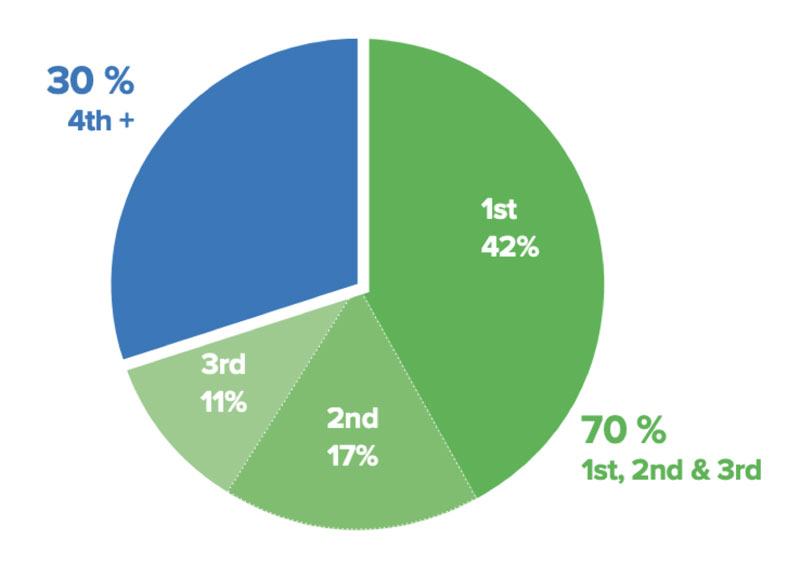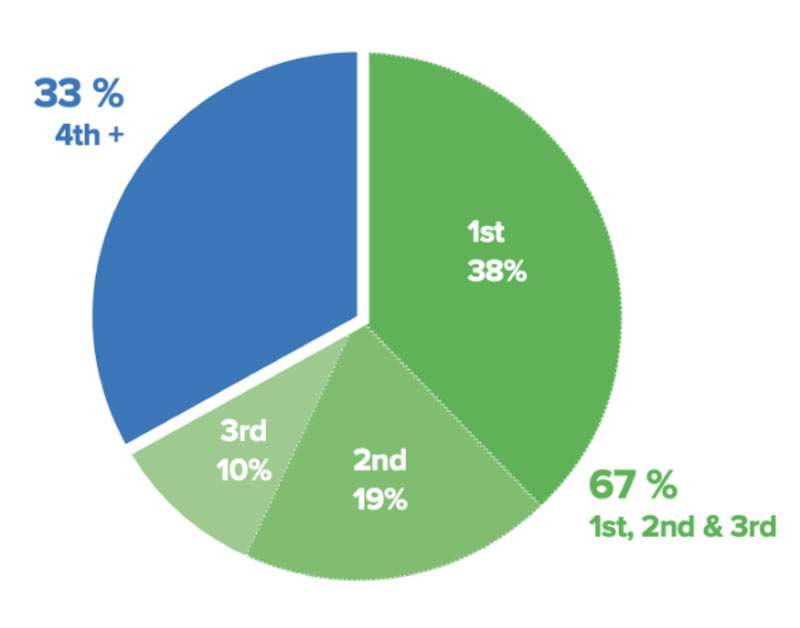The Match
Submitting a Rank List
In early February, you must submit a rank list placing programs in the order you would like to attend them. You can only include programs at which you interviewed. Residency programs also rank all of their interviewees in a similar fashion. This all gets sorted out by a computer system to make everyone as happy as possible. Theoretically, you could match at any program on your list, so do not list any program where you absolutely would not want to go. That being said, the only way you can match with the programs at the end of your list is if the programs you were more interested in were not equally interested in you. Therefore, the only alternative to matching at a less desirable program is not matching. Personally, I would have rather matched at my lowest‐ranked program than to not have matched anywhere at all.
When compiling your rank list, it is important to consider your priorities and what the "best fit" program will be for you. Do you enjoy more autonomy or hand-holding and guidance? Big city with lots of competition or rural programs with high catchment? Call hours? Support from the program director and faculty? There are many factors to consider aside from rankings and prestige. Talking to as many residents from different programs as possible will give you a feel for factors that may not be apparent to a medical student and how to best assess them. As social time with residents on the interview trail is often in a group setting, reaching out to residents or fellows one-on-one on a separate occasion from the interview day might give you the best opportunity for a candid conversation.
The Match Algorithm
The match process happens using a specific algorithm. Understanding the algorithm is key to structuring your rank list. I will attempt to explain the algorithm using an example scenario:
John is an ophthalmology applicant and has ranked Program A #1, Program B #2, and Program C #3. Let's say John is the very first person the match algorithm considers when it begins processing its data. Because he ranked Program A #1, he will be placed in the #1 spot on their match list as long as that program ranked him anywhere in their list. Jane also ranked Program A #1. Unfortunately for John, Program A ranked Jane higher than him, so he is moved to their #2 match spot and Jane replaces him at #1. Several more applicants rank Program A #1 and they were all ranked higher than John by the residency program. The program only has 4 residency positions, so John is moved off the program's match list. The algorithm now goes back to John and sees he ranked Program B #2. It tries to put him on their match list, but they have already been filled by applicants who were ranked higher than John. Finally, the algorithm assesses Program C, which John ranked #3. Program C ranked John #1 on their match list, so it is impossible that he will be bumped off the list by anybody else. After the algorithm is complete, John matches at Program C.
This ultimately means that you are not penalized for ranking dream programs above more realistic programs. If you do not match at your #1 rank, the algorithm simply moves down to your #2 as if that program was your #1. This is how the program favors applicant preferences over residency program preferences.
Detailed match statistics are not provided by the SF Match, but results may be generalized from the NRMP which uses the same algorithm. According to the 2020 NRMP data, 42% of matched U.S. seniors ended up at their first choice while 70% matched in one of their top 3 choices. [1] With COVID changes and virtual interviews for the 2020 interview cycle, the percentage of applicants matching at their 1st choice and in one of their top 3 choices decreased to 38% and 67%, respectively (Figure 3). [3] SF Match creates these graphs -- the links to both 2020 and 2021 data are references (1) and (3), respectively.
| 2020 Match Cycle | 2021 Match Cycle |
 |
 |
Figure 3. Overall percentage of U.S. senior matches by their rank choice in the 2020 and 2021 cycles [1,3]
Match Day
Ophthalmology Match Day takes place in early February. It is a much more low-key affair than the main match day. Applicants can expect an email the morning of Match Day stating whether they matched and where. This email was sent at exactly 6:00 am CST. Program directors are typically notified of who matched at their program one hour later and are free to notify these people at any time afterward. This means you may get a call or email as early as 7:00 am CST from your future program director. Match results are then posted on the SF Match website the following morning on the official Ophthalmology Match Day. Matching into ophthalmology lifts a huge weight off of your shoulders. The hard part is over, and you can enjoy the rest of your fourth year!
We'd like to give a special thanks to Joanna Silverman, MD, and Cheryl Wang, MD for their contributions to this 2021 update. Additionally, thank you to Erin Boese, MD, who contributed to the original match guide. The application and interview process is perpetually changing. Please contact Dr. Kemp (pavlina-kemp@uiowa.edu) with any questions, comments, or corrections.


